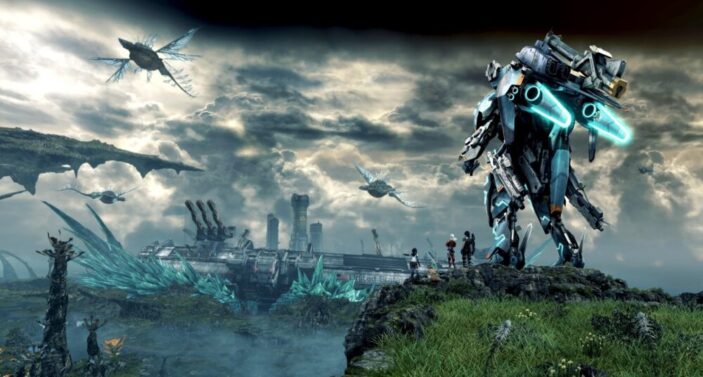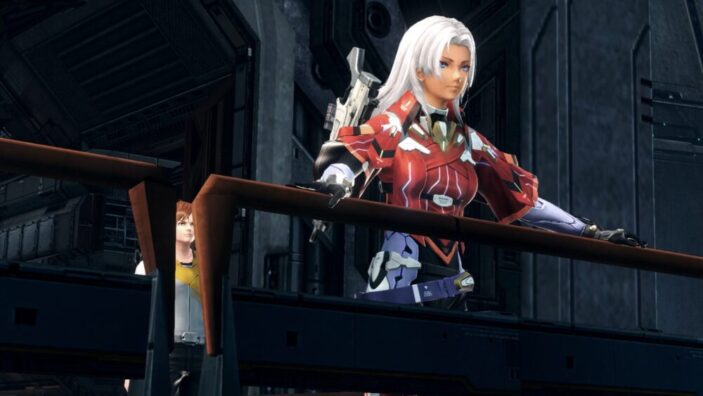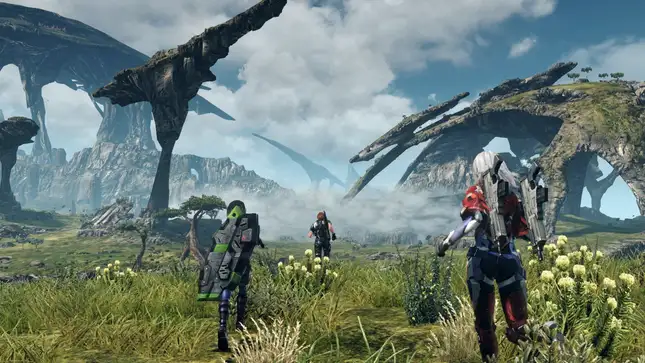
Originally released on the Wii U in 2015, Xenoblade Chronicles X is one of the final games from Nintendo’s previous console before the release of the Nintendo Switch. After a slew of successes with Donkey Koney Country Tropical Freeze, Bayonetta 2, Super Mario 3D World and New Super Mario Bros. U having made their way over from the Wii U to the Switch, it feels like one of those remaining classics has received that major facelift it so rightfully deserves.
The defining characteristics of the original Wii U release remain intact in this remaster, yet developer Monolith Soft has gone well beyond a simple visual upgrade. Instead of merely refining textures and tweaking the user interface, they have completely re-developed the designs of various systems and menus, in addition to introducing engaging new narrative-based content.
All of this has thankfully resulted in Xenoblade Chronicles X: Definitive Edition being able to stand out as the ultimate way to experience this overlooked classic, allowing for the final big title from the previous generation to be available on the Switch so you can finally retire your Wii U console.
Slow and Steady
Unlike the numbered entries in the Xenoblade series, Xenoblade X gets the ball rolling with a rather sombre introduction. Even before the player assumes control of their custom-created silent protagonist, Earth is obliterated in the crossfire of an intergalactic war between two hostile alien factions. Humanity was not an active participant in the conflict—it simply found itself in the wrong place at the wrong time. To make matters worse, only a single colony ship, the White Whale, manages to escape Earth’s destruction.
After further turmoil, the White Whale crashes onto the uncharted planet Mira. The survivors establish a makeshift settlement known as New Los Angeles (NLA) and begin the arduous process of ensuring their survival while searching for the Lifehold, a missing component of their ship that holds the key to humanity’s future.
While this premise is a solid foundation for a JRPG, Xenoblade X’s main narrative takes considerable time to establish its footing. Though it offers intriguing revelations early on, it lacks the character-driven, emotionally resonant storytelling of the numbered Xenoblade titles. Additionally, Monolith Soft’s advancements in cinematic presentation over the past decade are evident. The story is primarily conveyed through static conversation scenes, where characters stand in rigid formations, a stark contrast to the dynamic direction found in titles like Xenoblade Chronicles 3, for example.

However, the game compensates for these narrative shortcomings with charming and humorous side quests. These optional missions frequently explore themes of cultural exchange and coexistence between humans and the various alien species inhabiting NLA. Notably, one side quest involves preventing a radical political candidate from restructuring the entire economy into a pizza-based bartering system—just one example of the game’s lighthearted and inventive storytelling.
The remaster also addresses the original game’s controversial cliffhanger ending with new story content. While details remain under wraps, this additional material provides a more conclusive resolution, thematically aligning the game more closely with its Xenoblade predecessors. Longtime fans will undoubtedly find ample material for discussion and speculation in the years to come.
Your Original Creation
Xenoblade X offers a relatively constrained character creation system, retaining its binary gender selection and limited customization options. While some visual enhancements have been added, the rigid gender options feel somewhat outdated compared to modern RPGs. Though it would be challenging to implement expanded pronoun options given the game’s pre-recorded voice acting, these limitations are noticeable in today’s gaming landscape.
Once past the initial tutorial, the game opens into a vast, open-ended quest to explore Mira and support humanity’s survival. While a linear sequence of main story chapters exists, progression often necessitates engaging with the game’s numerous side systems and affinity missions. These missions, which revolve around various party members, include fully voiced interactions and, in some cases, unique boss battles. They stand as some of the most engaging content Xenoblade X has to offer.

The game’s quest structure, however, can feel overly restrictive. Initiating a main story or affinity mission locks the player into that quest until it is completed, preventing engagement with other missions. This rigidity can be frustrating if the next objective is one the player does not feel prepared for.
Nevertheless, Xenoblade X’s expansive world offers ample distractions, ensuring that exploration and progression remain engaging.
Mech Ahead
One of the most distinctive aspects of Xenoblade X is its mech system. These mechs, otherwise known as Skells, fundamentally alter the player’s relationship with Mira, though they are not accessible until approximately 30 hours into the game. While some may find this prolonged introduction frustrating, the gradual transition from powerless wanderer to powerful pilot enhances the game’s sense of scale and discovery. The eventual ability to fly a Skell further transforms exploration, revealing previously inaccessible areas and reinforcing the game’s philosophy: if you can see it, you can reach it.
Combat in Xenoblade X follows the series’ signature MMORPG-inspired mechanics, where characters automatically attack while players manage abilities on cooldown timers. A notable improvement in the remaster is the quick cooldown system, allowing players to reuse abilities instantly under certain conditions. This addition significantly enhances the pace and fluidity of battles, striking a satisfying balance between accessibility and challenge.

Beyond combat, Monolith Soft has addressed many of the Wii U version’s shortcomings. Players can now switch party members via the menu rather than manually recruiting them in NLA. Additionally, all party members receive experience points regardless of active participation, reducing unnecessary grinding. Affinity progression is also streamlined, making it easier to complete affinity missions and deepen relationships with party members.
Finally, the game’s user interface has undergone a substantial overhaul. Fonts have been updated for improved readability, menus have been redesigned to present information more efficiently, and combat UI refinements enhance clarity. These seemingly minor adjustments collectively result in a significantly smoother experience.
Final Thoughts
Monolith Soft has successfully revitalized Xenoblade Chronicles X without compromising what made the original version exceptional. The game remains challenging and immersive, yet its most frustrating design choices have been mitigated. Mira continues to be an awe-inspiring, perilous world, and this remaster ensures that exploring it is more enjoyable than ever.
A game that demands nearly 100 hours to complete is no small investment, but I wholeheartedly recommend Xenoblade Chronicles X: Definitive Edition. Monolith Soft has taken an already incredible game and received a fantastic makeover to make it the absolute best version of itself, thanks to the Switch’s upgraded hardware and massive player base.
If you are a stranger to the franchise, this is the perfect title to dive into. While it does take some time to get used to its controls and shooting style, the incredible story and stunning visuals will keep you coming back for more.
FOUR STARS (OUT OF FIVE)
Highlights: Engaging narrative; Fantastic combat; Gorgeous visuals
Lowlights: Looks great in handheld mode, but doesn’t translate well when docked
Developer: Monolith Soft
Publisher: Nintendo
Platforms: Nintendo Switch
Available: Now
Review conducted on Nintendo Switch OLED with a release code provided by the publisher.
